Essential Steps to Effectively Clean Your Dryer Vent
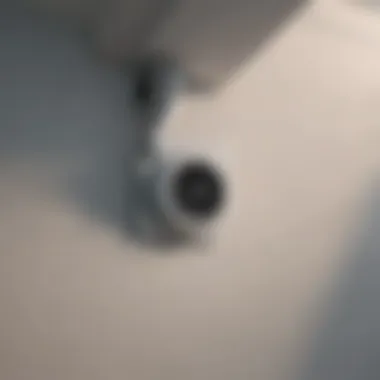
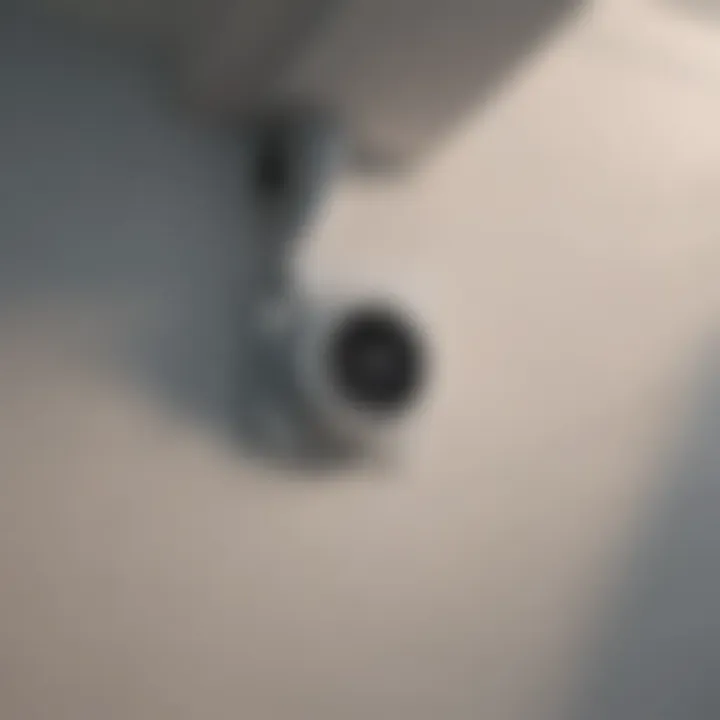
Intro
Cleaning a dryer vent is often overlooked, yet its significance cannot be overstated. Lint buildup in dryer vents poses severe risks, including fire hazards and reduced drying efficiency. Many homeowners unknowingly disregard this vital aspect of household maintenance. Without regular attention, clogged vents can lead to not just increased energy bills but serious safety issues.
In this comprehensive guide, we will walk you through the essential tools and techniques required for effective dryer vent cleaning. We will also discuss necessary safety precautions and highlight common vent issues that arise when maintenance is neglected. By the end, you will possess the knowledge to ensure your dryer performs at its best and minimize risks associated with lint accumulation.
Understanding Dryer Vents
Before we dive into cleaner specifics, it is essential to understand what a dryer vent does. A dryer vent serves the crucial function of venting hot, humid air from the dryer to the outside of your home. Proper ventilation is essential for maintaining airflow in order to dry clothes effectively.
Importance of Regular Cleaning
Regular cleaning of the dryer vent is essential for several reasons:
- Fire Safety: Lint is highly flammable. A buildup can ignite from the heat of the dryer, leading to destructive fires.
- Efficiency: A clean vent allows your dryer to use less energy while achieving quicker drying times.
- Longevity of Appliance: A well-maintained dryer experiences less strain, prolonging its life.
Regular maintenance is not merely an option; it’s a necessity to ensure home safety.
Necessary Tools for Cleaning
Gathering the right tools can make the cleaning process efficient. Here are some essentials:
- Screwdriver
- Lint brush or vacuum attachment
- Flexible dryer vent brush
- Safety goggles
- Mask (to avoid inhaling dust and debris)
Having these tools readily available ensures an effective cleaning process and promotes safety.
Techniques for Effective Cleaning
Now, we delve into the step-by-step cleaning techniques crucial for maintaining your dryer vent properly.
- Disconnect the Dryer: Always start by unplugging the dryer to ensure safety.
- Access the Vent: Detach the vent pipe from the back of the dryer carefully.
- Remove Lint Buildup: Utilize the lint brush to extract as much lint as possible from the vent and surrounding areas.
- Inspect Regularly: Check for visible signs of larger clogs and address them swiftly.
Ensure you clean every component involved in the vent system. Failing to do so opens the risk of inefficiency and hazards.
Safety Precautions
Safety should always be paramount during this process:
- Ensure proper ventilation: Clean late at night or in the early morning when fumes may dissipate quicker.
- Don't rush: Take your time. This reduces the chance of accidents.
- Wear protective gear: This prevents dust and debris from entering your eyes or lungs.
Performing a thorough cleaning of your dryer vent is fundamental in safeguarding your home. Equipping yourself with correct knowledge, tools, and safety measures leads to improved operational efficiency and fire prevention. Get started today and maintain a safer environment.
Understanding Dryer Vents
Understanding dryer vents is essential for homeowners seeking to maintain their dryer’s efficiency and safety. A dryer vent's primary role is to expel warm, moist air from the dryer to the outside, ensuring smooth drying cycles and preventing any risks associated with trapped lint or debris. When a dryer vent is working properly, it facilitates effective moisture removal. If neglected, it can lead to inadequate drying, increased energy consumption, and even fire hazards which can be deadly.
The importance of knowing how dryer vents function cannot be overlooked. They help protect your home by directing hot air and lint away from your dryer. An efficient dryer vent system focuses on the direction and conditions under which the warm, moist air escapes. This largely dictates your dryer’s performance and your home’s safety.
The Purpose of a Dryer Vent
A dryer vent serves multiple essential purposes. First, it ventilates moisture-laden air generated during the drying process. This prevents humidity buildup in your laundry area, contributing to a comfortable environment. Second, it directs lint away from the dryer’s internal components, preventing lint buildup that could hinder performance and pose a fire risk.
Lastly, proper operation of a dryer vent optimizes energy efficiency. A clean and functional vent allows the dryer to use less energy by expelling air effectively, thus minimizing operational costs and enhancing overall appliance lifespan.
Common Misconceptions About Dryer Vents
Despite their importance, there are many misconceptions surrounding dryer vents. One common fallacy is that dryers can operate without a vent. This belief can lead to serious consequences, including fire incidents and damage to the appliance itself. An unvented dryer can also create excess moisture, leading to mold growth.
Another myth suggests that dryer vents do not require regular cleaning. Some people believe that lint only accumulates within the dryer itself. In fact, the vent can accumulate lint just as easily, leading to clogs that will significantly impact drying efficiency. Ignoring the maintenance of your dryer vent is a misstep that can prove costly, making it absolutely critical to understand both the purpose and proper care of your dryer vent.
Risks of Clogged Dryer Vents
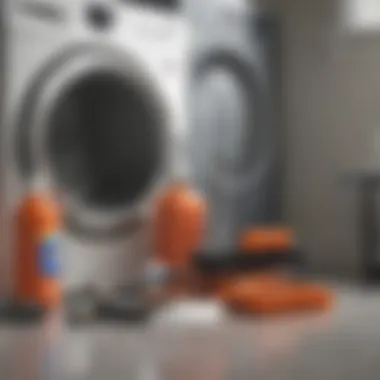
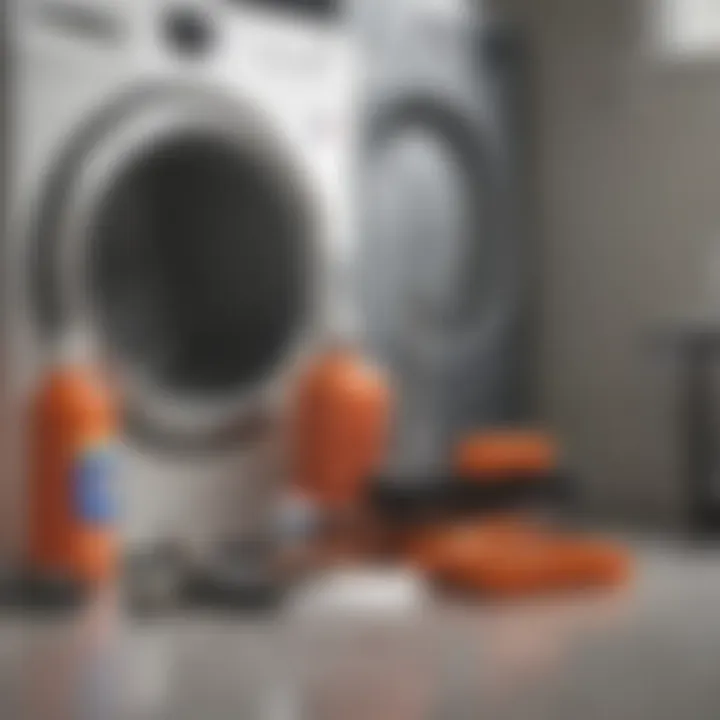
Cleaning your dryer vent is not just a routine chore. It holds significant importance for the safety and efficiency of your home. When a dryer vent becomes clogged, it poses various risks that can affect your appliance and family. Understanding these risks opens your eyes to the pressing need for vent maintenance. Neglecting this task can lead to serious consequences including fires, decreased dryer performance, and unexpected costs.
Fire Hazards
The most alarming risk associated with clogged dryer vents is the potential for fire. Lint, which is a byproduct of drying clothes, can accumulate and obstruct proper airflow. Over time, this build-up can ignite due to the hot air produced by the dryer.
According to the U.S. Fire Administration, thousands of residential fires happen annually due to mechanical failure, often linked to dryer vent issues. When the vent is blocked, the dryer must work harder to push air through, creating heat that can become dangerous. Awareness and proactive measures can be life-saving.
"Neglected dryer vents are the leading cause of appliance-related fires in homes, highlighting the need for regular cleaning."
Reduced Efficiency
Clogged dryer vents don’t just pose fire risks; they can significantly reduce the efficiency of your dryer. When airflow is restricted, the dryer takes longer to dry clothes satisfactorily. As a result, you might find your laundry needing multiple cycles to achieve the same results as when the vent was clear. This inefficiency can lead to frustration as you wait for clothes to dry.
Investing in regular vent cleaning ensures smooth airflow. It seals in the energy efficiency you expect from your appliance. Improve not only performance but also the lifespan of your dryer.
Increased Utility Bills
Finally, don’t overlook the impact on your utility bills. A dryer struggling with a clogged vent uses more energy, which leads to higher electric expenses. A study indicated that keeping dryer vents clean can reflect in reduced monthly bills. If your dryer consumes excessive energy, it signals a more serious issue.
In summary, understanding the risks of clogged dryer vents is essential for every homeowner. Regular maintenance, while simple, is vital to avert dangerous conditions, enhance equipment efficiency, and save on energy costs.
Signs Your Dryer Vent Needs Cleaning
Identifying the signs that your dryer vent requires cleaning is crucial for maintaining both its efficiency and safety. Ignoring these signs can lead to various issues, including reduced performance and increased risk of fire hazards. A well-maintained dryer vents enhances the airflow, ensuring that your dryer operates effectively and safely. Below are specific indicators that suggest your dryer vent needs immediate attention.
Longer Drying Times
One of the first noticeable signs of a clogged dryer vent is extended drying times. If clothes take longer than usual to dry, it indicates that airflow is restricted. Poor airflow means the dryer has to work harder to expel moisture, which not only causes delays but also increases energy consumption. Ignoring this issue can lead to decreased appliance lifespan due to added strain, potentially resulting in costly repairs or replacements.
Overheating Dryer
If your dryer feels unusually hot to the touch during operation, this is a significant warning sign. An overheating dryer is often a result of lint buildup within the vent. The obstruction prevents heat from escaping, leading to overheating and a risk of damage to the appliance. Continuous use of an overheating dryer can lead to appliance malfunction and pose serious safety risks.
Burning Smell
A burning smell during drying cycles should never be overlooked. It may indicate lint accumulation or overheating internal components. If you detect this odor, it is crucial to turn off the dryer and immediately investigate the issue, as a burning smell can signal potentially dangerous conditions. Prioritizing cleaning in this situation can help prevent dangerous electrical malfunctions and fire risks.
Lint Accumulation Around the Dryer
Visibly noticing lint buildup around the vent or the dryer itself is a clear sign that cleaning is needed. If lint is being expelled into your laundry area, it typically means the dryer vent is blocked. Regularly checking for lint around your dryer can help you catch issues before they escalate. Clearing away lint not only improves safety but also prevents future clogs from forming in the venting system.
Regularly observing for these signs safeguards your home from potential fire hazards and enhances the efficiency of your dryer. Making timely interventions is both practical and necessary to maintain the performance of your appliance.
Essential Tools for Dryer Vent Cleaning
Cleaning your dryer vent requires the right tools. Using appropriate equipment can significantly improve both the quality of the job and safety. High-quality tools not only make the cleaning more effective but also can help avoid complications like damage to the vent or injury. In this section, we will explore each essential tool, underline their importance, and discuss how they contribute to the overall efficacy of dryer vent maintenance.
Lint Brush
A lint brush offers a targeted solution for reaching areas in the dryer vent system that are often neglected. Designed with sturdy bristles, this tool effectively dislodges lint buildup that accumulates over time. Using a lint brush helps to enhance airflow due to the removal of obstructive lint clogs, leading to increased dryer efficiency.
Benefits
- Provides thorough cleaning in hard-to-reach spots.
- Can extend the lifespan of your dryer.
- Ensures safer operation by minimizing fire risks associated with lint accumulation.
Employing a lint brush while cleaning represents a fundamental aspect of routine maintenance.
Vacuum with Hose Attachment
A vacuum equipped with a flexible hose is another crucial tool. This vacuum can remove any remaining lint and debris after using the lint brush, ensuring a comprehensive job. Its hose attachment helps it reach remote or narrow spaces, further improving the dexterity needed for effective cleaning.
Considerations
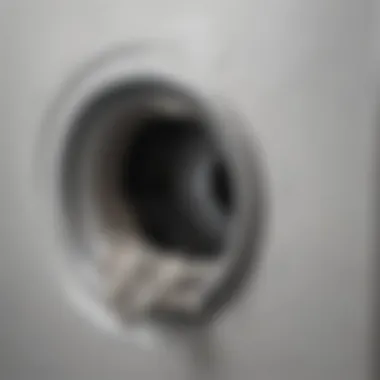
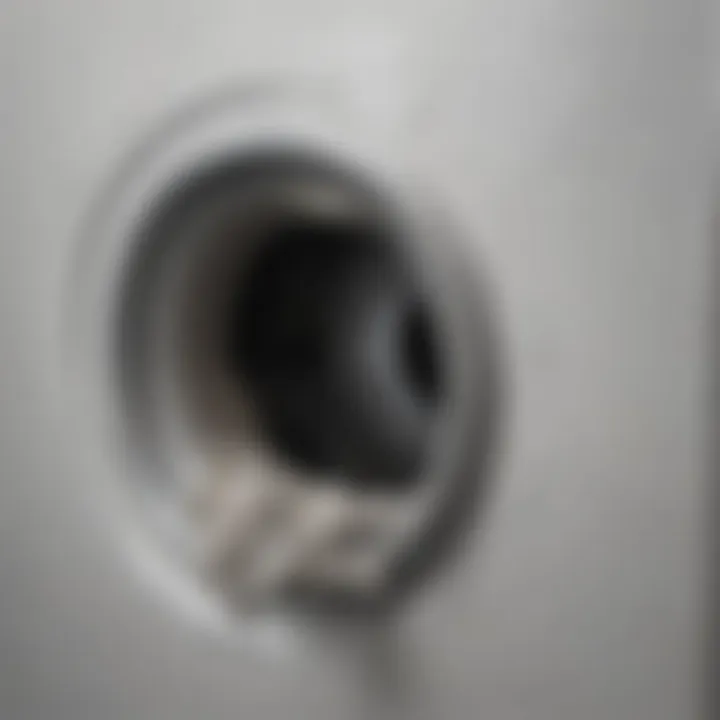
- Look for a vacuum with strong suction capability. This feature ensures all unwanted particles are effectively removed.
- Regularly check the filter and empty the dust container to maintain optimal performance.
In essence, this tool is integral to achieving a dry, clean vent that is free of any clogging materials.
Screwdriver
A screwdriver is essential for disassembling various parts of the vent setup if necessary. Depending on the design of the dryer and vent, screws may need to be removed to access the vent pipe adequately. Having the correct type of screwdriver will save time and avoid frustration during the cleaning process.
Importance
- Facilitates safe access to parts of the dryer system.
- Allows for thorough cleaning that is not limited to just the visible areas.
Proper use of a screwdriver helps ensure you leave no area unchecked.
Duct Tape
Duct tape may seem like a minor tool, but its purpose in maintaining dryer vent connection is significant. This tape can securely seal joints in the vent system, ensuring there are no gaps where lint could gather and air could escape. Maintaining the integrity of the vent is crucial for efficiency.
Tips for Usage
- Securely attach any loose ducts with duct tape to prevent future injury.
- Always check for signs of wear or damage to ensure air-tight seals should maintenance be necessary.
In brief, duct tape safeguards your systematically clean dryer vent against dust buildup, ensuring lasting performance and efficiency.
Step-by-Step Dryer Vent Cleaning Process
Cleaning the dryer vent is a crucial task for maintaining the efficiency and safety of your laundry system. Over time, lint and debris accumulate in the vent, which can lead to inefficiencies and potential fire hazards. This cleaning process addresses the problem at its root by ensuring that airflow remains unobstructed and that the dryer operates at optimal performance.
Moving forward, we will detail what each step entails and why those steps should matters.
Disconnecting the Dryer
Before beginning any cleaning process, safety takes priority. Start by unplugging the dryer from the electrical outlet. If it is a gas dryer, turn off the gas supply to avoid leaks. After calling apart the bike of the appliance, it generally makes the disassembling guidance manual a key component in making the right actions.
Be cautious while moving the dryer away from the wall, taking care to avoid damaging the vent pipe or any connected areas. It is critical to ensure enough space for accessing the vent system easily.
Accessing the Vent
Once the dryer is moved, locate the vent that's connected to the back. It is typically a rigid or flexible duct that leads to the outlet through the wall or ceiling. Tape connections should be checked for looseness, and screws or clamps holding the ducting might have to be released. In accessing the vent, extra care is necessary to prevent damaging components during disassembly.
At this stage, check for visible accumulations of lint that may prevent smooth airflow. After inspecting, fully remove the entire duct if it's detachable. This allows for comprehensive access to spots where lint is most likely to collect.
Cleaning the Vent Pipe
Start cleaning the vent pipe with a lint brush or vacuum hose attachment. Insert the brush into the length of the duct, twisting gently to dislodge any buildup. If the vacuum is available, use it to rid it of debris. It is essential to ensure a complete clean to significantly increase airflow efficiency by removing all desturctive elements blocking it.
For extensive clogs, a rotary cleaning tool can reach deeper into long duct systems. Through this, you ensure reduced risk of fire hazards as well as optimized performance when washing clothing.
Cleaning the Dryer Outlet
After addressing the vent pipe, shift attention to the dryer outlet located at the back of the dryer. Similar to the vent pipe, it requires thorough cleaning to maintain excellent air exit. Pay attention to lint-evidence areas within the outlet.
Make sure there are no nesting formations in hidden corners or gaps. Narrow brush fixtures can assist in maneuvering while still being systematic during this phase ensures any major residues are addressed sufficiently before the restoring took place again.
Reconnecting the Dryer
Upon completing both cleaning processes, it's time to reverse the previous steps of disassembly. Reconnect the duct properly, ensuring adequate carbon connection angles. Secure with screws or tape effectively handle abd claimed.
Put in return the dryer securely against the wall, ensuring that no kinks occur anywhere concerning the ventline. Leave the connection fully secure before reconnectt the gas supply or plugin. A final dry run could verify full ready state for overall, checking that any deep fried keeps soft warm perfomance is achieved through this procedural foul-up comporting through much safety now in mental vision all through act of caution.
Maintenance Tips for Preventing Vent Clogs
Prevention is always better than cure, especially when it comes to dryer vents. Lowering the risk of clogs saves time, money, and reduces fire hazards significantly. Engaging in regular preventive maintenance can extend the lifespan of your dryer while ensuring optimal performance. Simple steps taken on a routine basis can stop serious problems before they start. The following key components form an effective strategy for keeping your dryer vent clean and efficient.
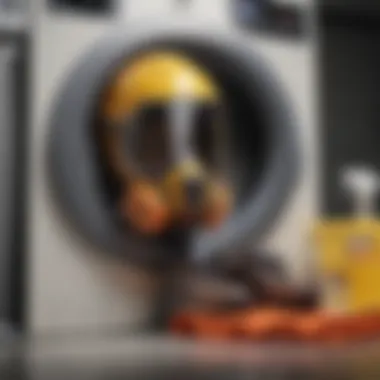
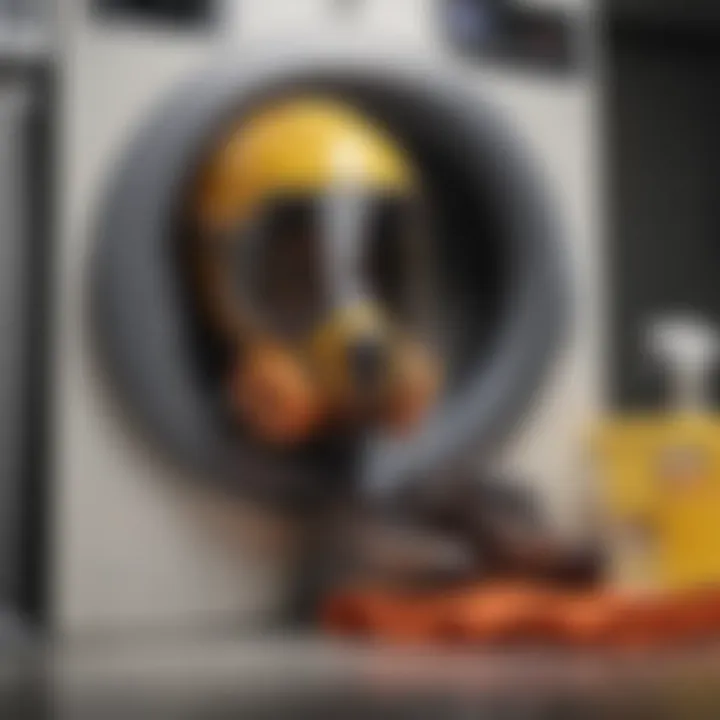
Regular Inspections
Conducting regular inspections of your dryer vent is essential. Homeowners should examine their vent systems at least twice a year. A thorough inspection entails assessing the entire duct system for blockages, sharp bends, or any areas where lint might accumulate. Checking the exterior vent cover is also important to confirm it opens properly when the dryer is running. Look for signs of damage or weathering that may impact performance. By catching problems early, you can avoid costly repairs and potential safety hazards.
Benefits of Inspections
- Identifies potential issues before they escalate.
- Ensures the efficiency of the dryer, minimizing drying time.
- Enhances safety by reducing the risk of dryer fires.
- Improves air circulation and drying performance.
Setting a Cleaning Schedule
Establishing a routine cleaning schedule for your dryer vent is another effective maintenance tip. Many manufacturers suggest cleaning the vent and ducts at least once a year. During peak laundry seasons, such as winter or when children are back in school, homeowners should consider increasing the frequency of their cleaning. By setting a specific schedule, you ensure that dryer maintenance does not get pushed aside.
Recommended Cleaning Schedule
- Once a Year: For steady use, clean annually to remove accumulated lint.
- Every Six Months: For heavy usage, such as large families or cold months.
Consistently sticking to this schedule ensures that your vent system remains clear and operational, greatly reducing the chance of clogs.
Using Lint Traps
Utilizing lint traps is a vital step in maintaining clean dryer vents. Many modern dryers come equipped with built-in lint filters, but additional lint traps can offer enhanced protection. Place these traps in areas prone to lint accumulation, like behind the dryer or at the beginning of the vent. These handy devices catch fluff and debris before they clog the air passage.
Advantages of Lint Traps
- Easily removable and cleanable, facilitating maintenance.
- Protects the vent from excess debris buildup.
- Shields against overheating issues caused by prohibited airflow.
When you follow these maintenance tips, you can significantly improve dryer performance while minimizing safety risks. Preventing clogs in your dryer vent not only enhances the effficiency of your appliance but also promotes a safer home environment.
Professional Dryer Vent Cleaning Services
When maintaining a dryer, understanding the role of professional vent cleaning services becomes crucial. While DIY approaches can address occasional buildup issues, professionals bring specialized knowledge and experience that can greatly enhance cleaning efficacy. Regular schedules can help in preventing lint accumulation from becoming a severe issue. Failure to address excessive lint can lead to increased risks of fire hazards due to overheating. Regular cleaning performed by experts can avert this potentially dangerous situation.
When to Consider Professional Help
Several indicators can prompt homeowners to enlist the assistance of a professional. Noticing extended drying times might suggest that lint buildup has reached a considerable level, indicating that a simple home remedy may not suffice. Furthermore, if the dryer has an overheating issue, it can signify underlying vent problems. If any unexpected burning smell arises during operation, it raises alarm bells about possible lint obstruction or other hazards within the venting system.
There are also reasons tied to convenience and expertise. Many homeowners may lack the necessary tools or feel hesitant about tackling the cleaning process themselves. Professional services can eliminate these concerns knotting the hair, offering peace of mind. They know the intricacies of various vent systems and can pinpoint problems that might go unnoticed by an untrained eye.
Finding a Reliable Service
Selecting a competent service is critical to ensuring that the job is executed effectively. One way to begin is to seek recommendations from acquaintances or family. Often, positive experiences shared by someone you trust offer insight. Conducting online research can also bring up credentialed companies in your locality. Essential criteria could include confirmation of licensing, insurance, and favorable customer feedback.
Reading reviews on platforms like Yelp or Google can be enlightening. Professionals with high ratings typically exhibit reliability and a strong work ethic. Furthermore, checking sites like Reddit or local forums can provide personal narratives to aid your decision. Communication before engaging their services can lead towards smoother expectations on both sides.
Cost Considerations
Understanding the cost factor of dryer vent cleaning remains a practical consideration. Prices usually vary based on factors like geographical location, service provider reputation, and vent system complexity, generally ranging from $100 to $300 per service. Furthermore, some companies might include additional costs for severe blockages or extensive work required.
To avoid unexpected charges, requesting an estimate beforehand is wise. Often, a reputable company will assess the situation accurately during their initial visit, providing fair costs aligned with the complexity of work they envision performing.
Ultimately, considering the potential costs tied to a fire and reduced efficiency would certainly underline the necessity for this preventative investment. Keeping dryer vents clean is crucial not just for efficiency but for safety in one's home.
Ending
The Importance of Regular Maintenance
Maintaining your dryer vent is a critical task that cannot be overlooked. The effectiveness of your dryer directly correlates with how well its venting system operates. When vents accumulate lint and debris, airflow decreases, leading to increased drying times. Proper maintenance ensures tight seals and pathways, reducing the risk of lint buildup which can be a major fire hazard.
Furthermore, regular check-ups increase the longevity of your appliance. A dryer functioning effectively will require less energy, resulting in lower utility costs for the homeowner. Lint buildup also promotes overheating, which diminishes the efficiency of the machine. Overall, consistent upkeep is essential for safety and financial reasons.
Encouragement for Action
Taking action to maintain your dryer vent is not just wise but necessary. Ignoring this essential process can lead to serious consequences, including extensive damage and even safety hazards. Scheduling routine cleanings complements a broader focus on home maintenance, demonstrating a commitment to safety and efficiency in your living environment.
Incorporate tools and methods discussed in this article, and perhaps set reminders in your calendar. The task can often seem daunting, yet breaking it down into manageablesteps makes it accessible. By prioritizing your dryer vent's maintenance, you are not only protecting your home from risky conditions but optimizing your dryer for peak performance.
Remember, a little effort in maintaining your dryer vent goes a long way. Make it a habit - your future self will appreciate it.
Be diligent, locate a reliable lint brush or vacuum in your home, and delegate the task within your household. You will yield no drawbacks from a clean and efficient dryer vent system, only improvements in your utilities and peace of mind.



